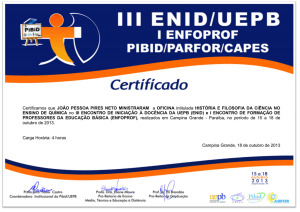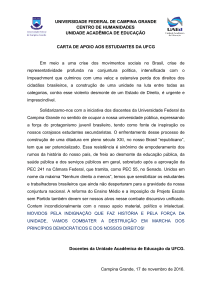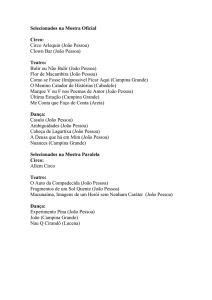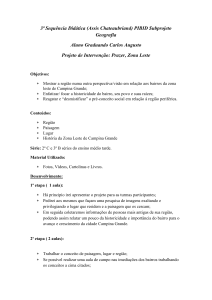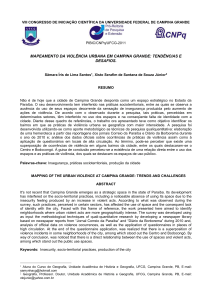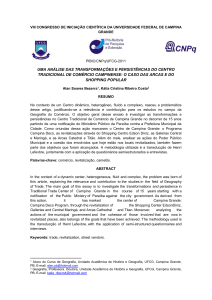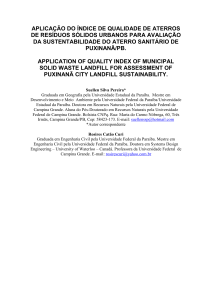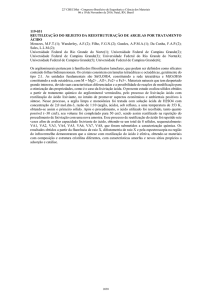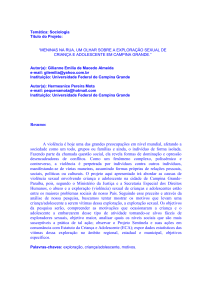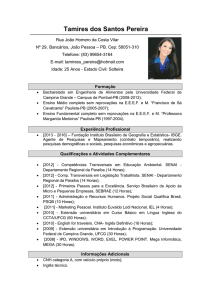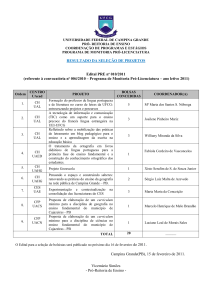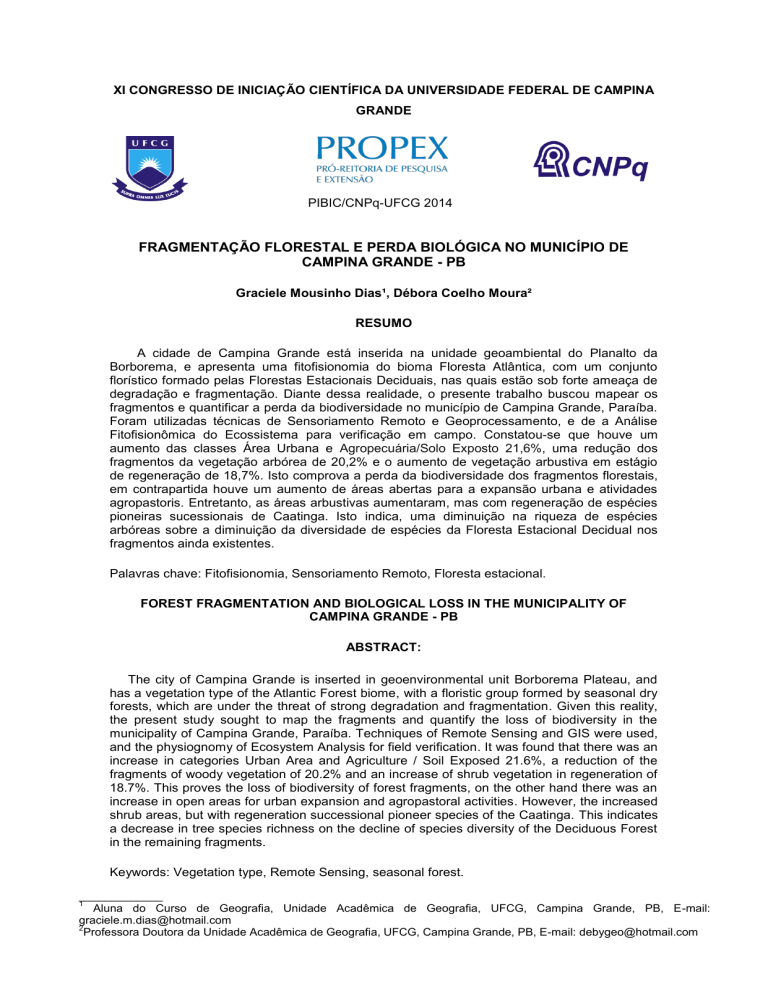
XI CONGRESSO DE INICIAÇÃO CIENTÍFICA DA UNIVERSIDADE FEDERAL DE CAMPINA
GRANDE
PIBIC/CNPq-UFCG 2014
FRAGMENTAÇÃO FLORESTAL E PERDA BIOLÓGICA NO MUNICÍPIO DE
CAMPINA GRANDE - PB
Graciele Mousinho Dias¹, Débora Coelho Moura²
RESUMO
A cidade de Campina Grande está inserida na unidade geoambiental do Planalto da
Borborema, e apresenta uma fitofisionomia do bioma Floresta Atlântica, com um conjunto
florístico formado pelas Florestas Estacionais Deciduais, nas quais estão sob forte ameaça de
degradação e fragmentação. Diante dessa realidade, o presente trabalho buscou mapear os
fragmentos e quantificar a perda da biodiversidade no município de Campina Grande, Paraíba.
Foram utilizadas técnicas de Sensoriamento Remoto e Geoprocessamento, e de a Análise
Fitofisionômica do Ecossistema para verificação em campo. Constatou-se que houve um
aumento das classes Área Urbana e Agropecuária/Solo Exposto 21,6%, uma redução dos
fragmentos da vegetação arbórea de 20,2% e o aumento de vegetação arbustiva em estágio
de regeneração de 18,7%. Isto comprova a perda da biodiversidade dos fragmentos florestais,
em contrapartida houve um aumento de áreas abertas para a expansão urbana e atividades
agropastoris. Entretanto, as áreas arbustivas aumentaram, mas com regeneração de espécies
pioneiras sucessionais de Caatinga. Isto indica, uma diminuição na riqueza de espécies
arbóreas sobre a diminuição da diversidade de espécies da Floresta Estacional Decidual nos
fragmentos ainda existentes.
Palavras chave: Fitofisionomia, Sensoriamento Remoto, Floresta estacional.
FOREST FRAGMENTATION AND BIOLOGICAL LOSS IN THE MUNICIPALITY OF
CAMPINA GRANDE - PB
ABSTRACT:
The city of Campina Grande is inserted in geoenvironmental unit Borborema Plateau, and
has a vegetation type of the Atlantic Forest biome, with a floristic group formed by seasonal dry
forests, which are under the threat of strong degradation and fragmentation. Given this reality,
the present study sought to map the fragments and quantify the loss of biodiversity in the
municipality of Campina Grande, Paraíba. Techniques of Remote Sensing and GIS were used,
and the physiognomy of Ecosystem Analysis for field verification. It was found that there was an
increase in categories Urban Area and Agriculture / Soil Exposed 21.6%, a reduction of the
fragments of woody vegetation of 20.2% and an increase of shrub vegetation in regeneration of
18.7%. This proves the loss of biodiversity of forest fragments, on the other hand there was an
increase in open areas for urban expansion and agropastoral activities. However, the increased
shrub areas, but with regeneration successional pioneer species of the Caatinga. This indicates
a decrease in tree species richness on the decline of species diversity of the Deciduous Forest
in the remaining fragments.
Keywords: Vegetation type, Remote Sensing, seasonal forest.
_____________
1
Aluna do Curso de Geografia, Unidade Acadêmica de Geografia, UFCG, Campina Grande, PB, E-mail:
[email protected]
2
Professora Doutora da Unidade Acadêmica de Geografia, UFCG, Campina Grande, PB, E-mail: [email protected]

